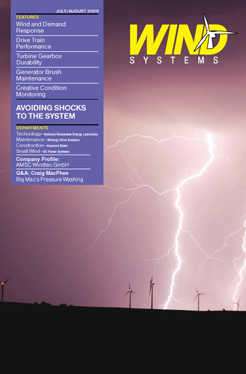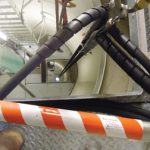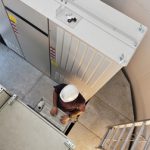As wind turbines become a significant part of our electrical generation capacity, it is increasingly important that the performance of the wind turbine is similar to the performance of our conventional power generators. Both hydro and nuclear power generators and coal fired and natural gas fired generation plants utilize conventional synchronous generators. Reactive power injection in these traditional power generators is determined by controlling the excitation current of the generator. Also, since most electric loads are inductive, thereby absorbing inductive reactive power, the traditional power plant is normally injecting reactive power to help support the system voltage and balance the reactive power in the system. These same grid support features, as well as ride-through capabilities, are now also required from wind turbines, and the actual performance depends very much on the type of wind turbine drive train the wind turbine manufacturer has selected. The most common drive train used at the moment is the so-called doubly fed system shown in Fig. 1.
A newer wind turbine drive train technology, using a permanent magnet synchronous generator in combination with a full power converter, is increasingly becoming more popular in the wind turbine industry. The very largest wind turbine manufacturers in the world have all introduced this newer permanent magnet generator technology for wind turbine applications. Several factors—including improved grid fault ride-through capability and higher low speed efficiency, as well as lower maintenance requirements—are all factors driving this technology shift. In this paper we will further study the actual ride-through results achieved from full scale field tests on a large wind turbine using a permanent magnet generator with full power converter.
Grid Code Requirements
Utility Grid Code requirements are frequently referencing the guidelines defined by E.ON (E.ON, Grid Code—High and extra high voltage. Bayreuth 2006, E.ON Netz GmbH) for grid interface requirements, which are applicable to wind turbines. Fault ride-through (FRT) is one of the key requirements of these grid codes. The FRT requirements define how deep and long the grid voltage dips have to be managed by the turbine drive train and its power converter. Requirements for capacitive reactive current injection are also defined in this standard. The main function of the injected reactive current is to the support grid voltage during the voltage dip event.
Power System Comparisons
Full power converters (FPC), combined with permanent magnet synchronous generators (Fig. 2), represent the newest technology in wind power market. FPC has many advantages compared to older technologies. The main advantages of FPC during FRT events are the fully decoupled and separately controlled grid currents and generator torque. This means that the active and reactive grid currents, respectively, can be set at the most advantageous levels for ride-through during a FRT event. The generator torque can be precisely controlled, which helps to control the DC-link voltage in the converter. Therefore, the FPC is a very robust and flexible topology, and the software-based control algorithms are easy to implement. From a hardware design standpoint it is usually also necessary to add over-voltage protection in the DC link in the form of a brake chopper unit to further prevent DC over-voltages during a sudden grid event. As mentioned previously, the doubly fed induction generator (DFIG) drive train (Fig. 1) has been the most commonly used wind turbine drive train topology so far.
Compared to the permanent magnet generator and its FPC, the DFIG requires additional protection circuits and components such as a so-called crowbar in the rotor circuit and a static switch in the stator circuit. These are typically required to achieve acceptable FRT during a grid event. Without these protection circuits, the behavior during fast transients and voltage dips can be unexpected. Despite these additional components, the reactive current injection capacity for the DFIG is usually insufficient to meet the latest grid code requirements. This is because the DFIG drive train has a reduced power converter with a reactive current injection capacity of only about 30 percent.
Testing and Results
Special field measurements have been performed to verify the FRT capabilities of The Switch’s FPC drive train on an actual operating wind turbine.Fig. 3 The voltage dip was generated by using large phase to ground switched inductors on the medium voltage side of the turbine’s step-up transformer. The actual grid voltage during the voltage dip event is 25 percent of the nominal grid voltage at the connection point, without the supporting effect of The Switch’s full power converter. The active power from the wind turbine before the dip event was approximately 80 percent of nominal. The results can be found in Fig. 4 showing that the FPC drive train rides trough the voltage dip event without any problems. Close to nominal reactive power is produced during the voltage dip, which improves the actual voltage level in the point of common coupling of the wind turbine. The generator torque is rapidly ramped down to avoid over-voltages in the converter DC-link.
In summary, the permanent magnet synchronous generator combined with a full power converter offers the best fault ride-through performance, the highest efficiency, and the most reliability of modern wind turbine drive trains.Fig. 5








































